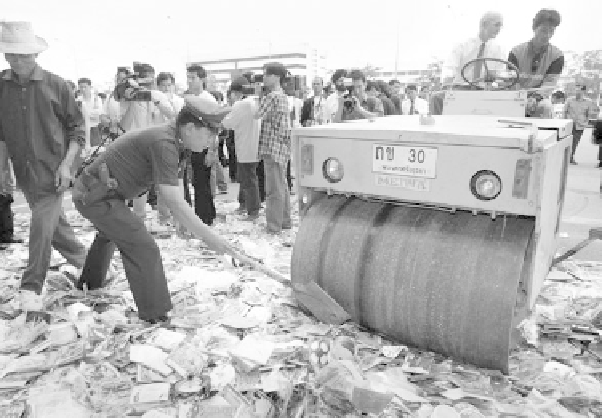Information Technology Reference
In-Depth Information
FIGURE 4.8
Counterfeit CDs are destroyed in Thailand.
(© Reuters/Corbis)
copying. Sometimes that makes it impossible for consumers to make copies even for pur-
poses that are considered fair use, such as making a backup. Larry Kenswil of Universal
Music Group says, “What we really want to do is not to stop copying, simply to stop
redistributing. But the technology available doesn't distinguish between the two” [37].
The Digital Millennium Copyright Act (DMCA), passed by Congress in 1998, was the
first major revision of United States copyright law since 1976. The primary purpose of
the DMCA was to bring the United States into compliance with international copyright
agreements it had signed [35]. Provisions in the DMCA significantly curtail fair use of
copyrighted material. The DMCA makes it illegal for consumers to circumvent encryp-
tion schemes placed on digital media, and it is illegal to sell (or even discuss online) a
software program designed to circumvent copy controls [49].
Online service providers that misuse copyrighted materials face severe penalties
[49]. That means, for example, a university that knows students are exchanging MP3
files on the campus network and does nothing to stop them can be sued [50].
The DMCA extends the copyright protection to music broadcast over the Internet.
It requires royalty payments to be made to copyright holders of music played over the
Internet since October 1998. For example, a college Internet radio station would pay the
larger of an annual fee of $500 or $0.0002 per listener per song for every song that it
plays. Radio stations are having a hard time determining how much they owe, because
most of them have not kept track of how many online listeners they have or the number

